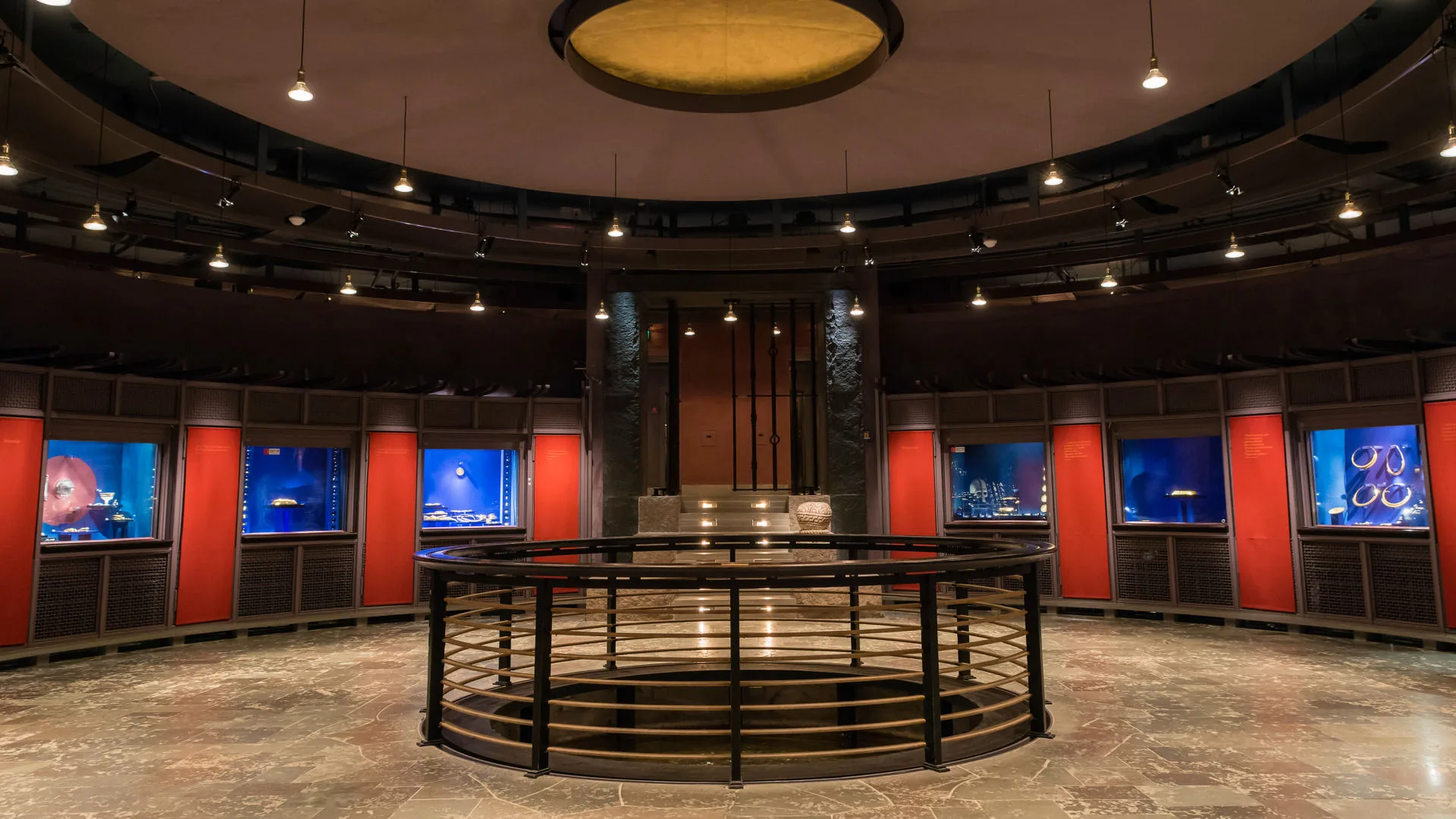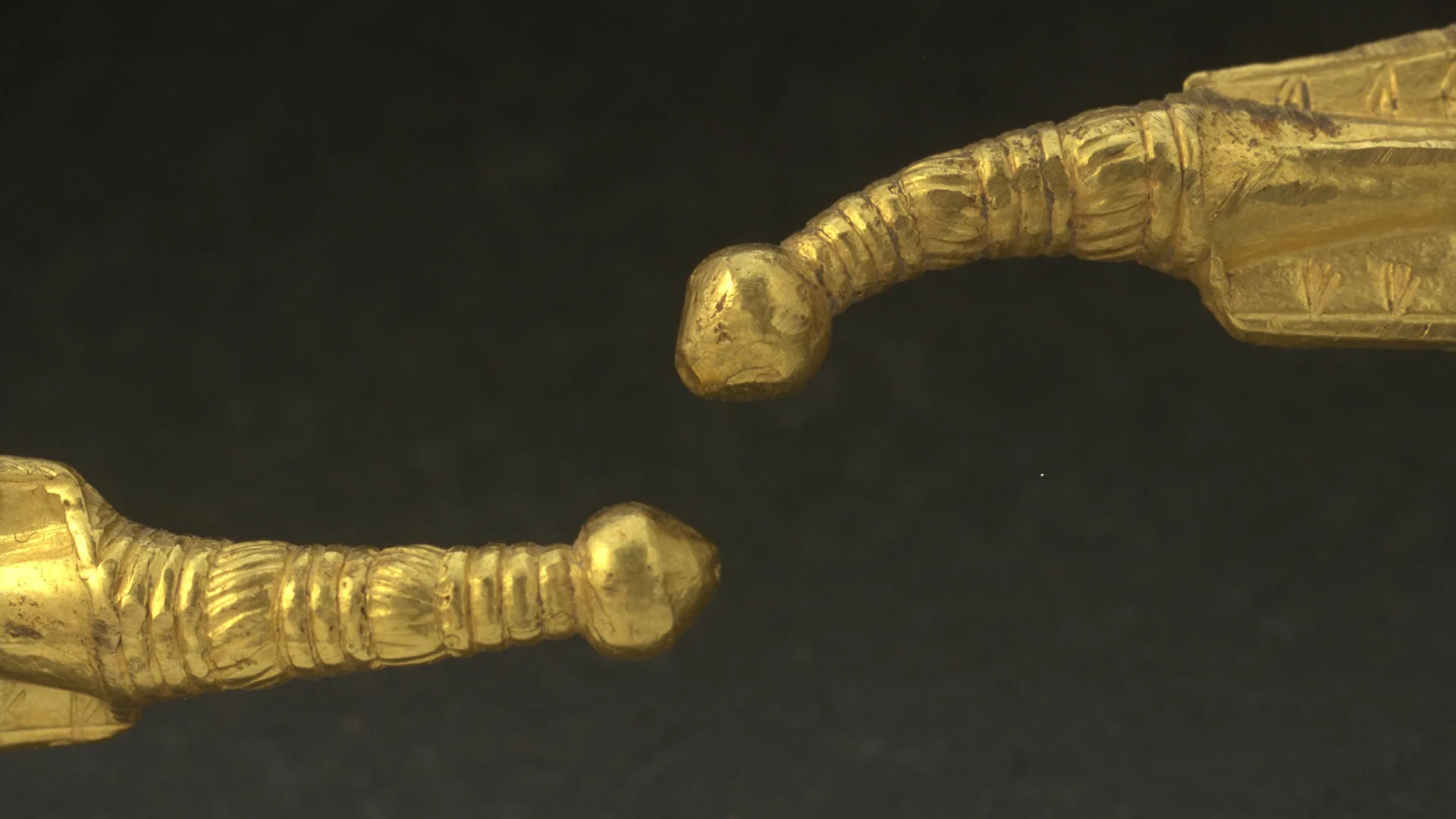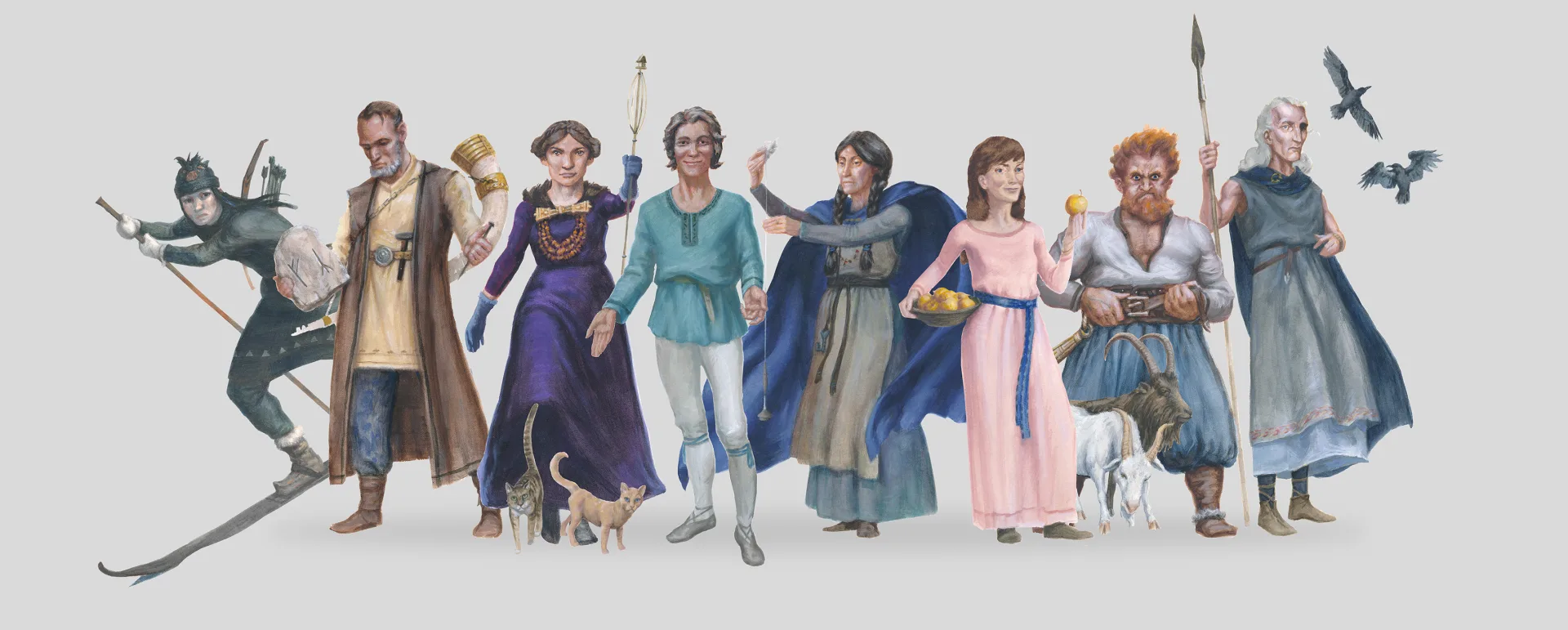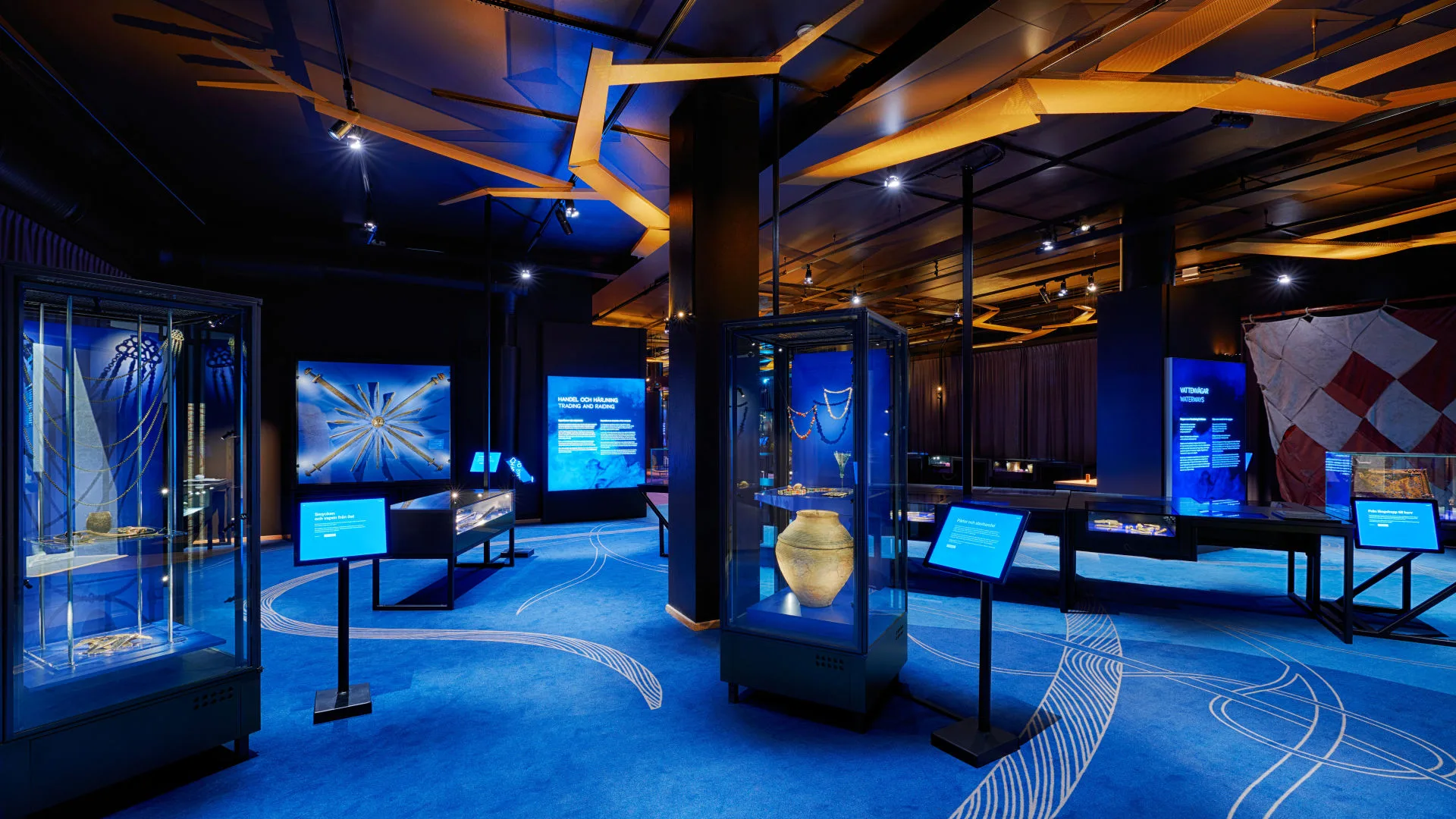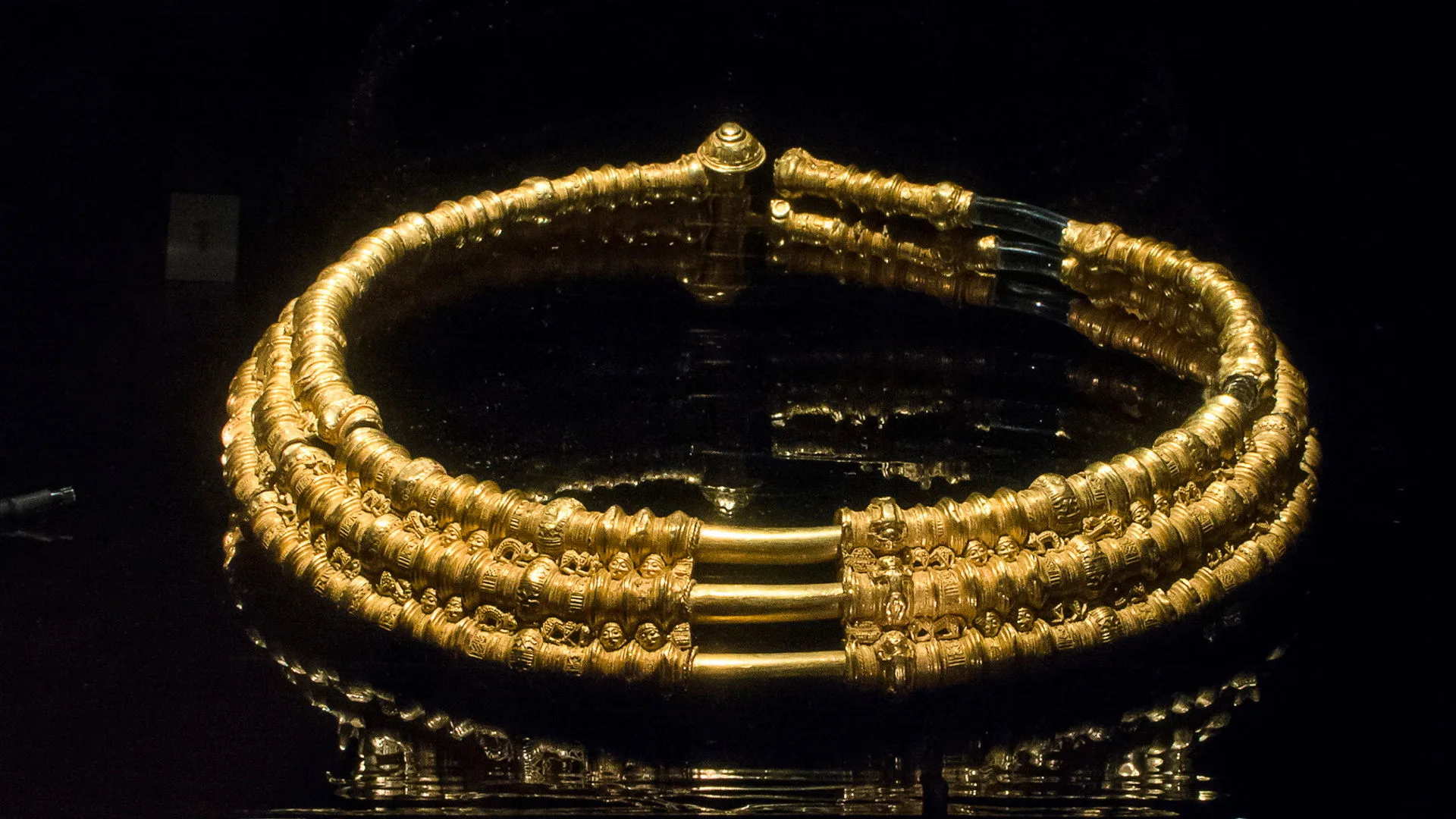
The Gold Room
Sweden has one of Europe’s richest collections of prehistoric gold and silver. Nearly 3,000 gold objects are kept here. Many of them can be seen in this exhibition.
These precious things were often hidden in the ground, where they were found by servant girls and farmhands, widows and those employed in agriculture and forestry. To many of them, the unexpected discovery meant an end to poverty. The state paid for the finds and they were sent to the Swedish History Museum.
Since the 17th century, Swedish legislation protects antiquities. This covers finds made from gold, silver or copper alloys. If they are over 100 years old they are bought by the state, which accounts for the unusually large number of gold and silver objects which have been preserved in Sweden.
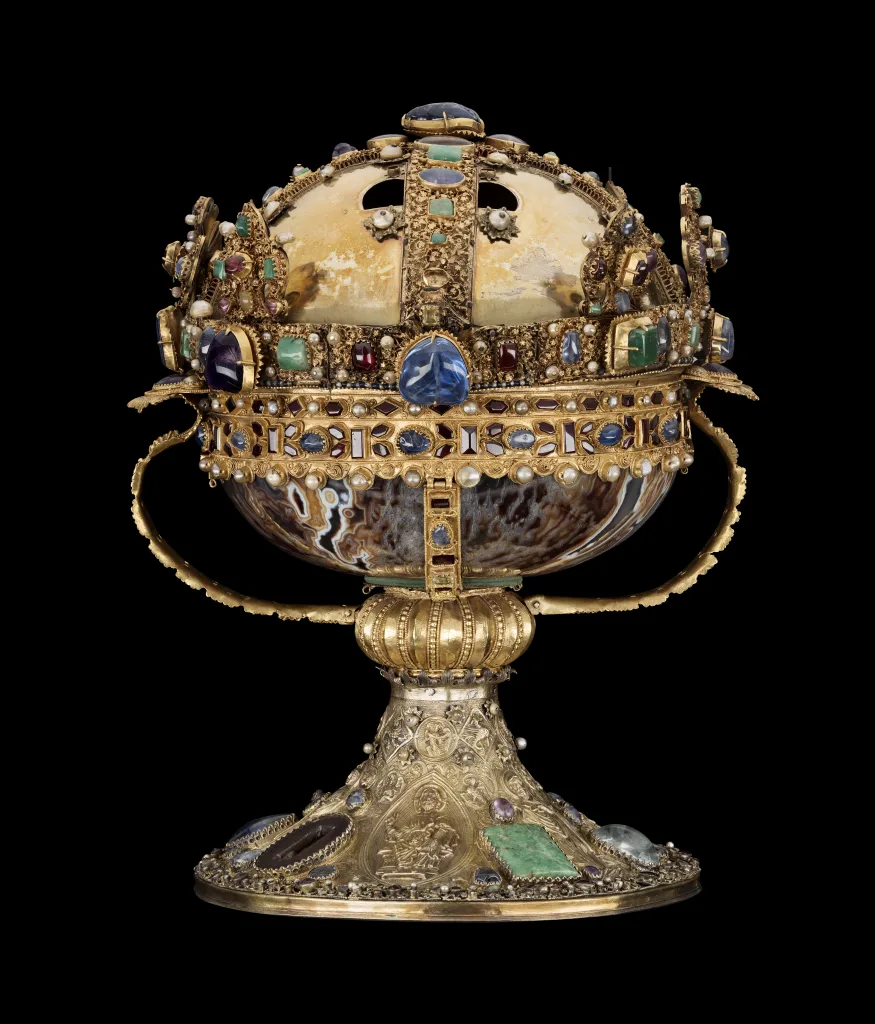

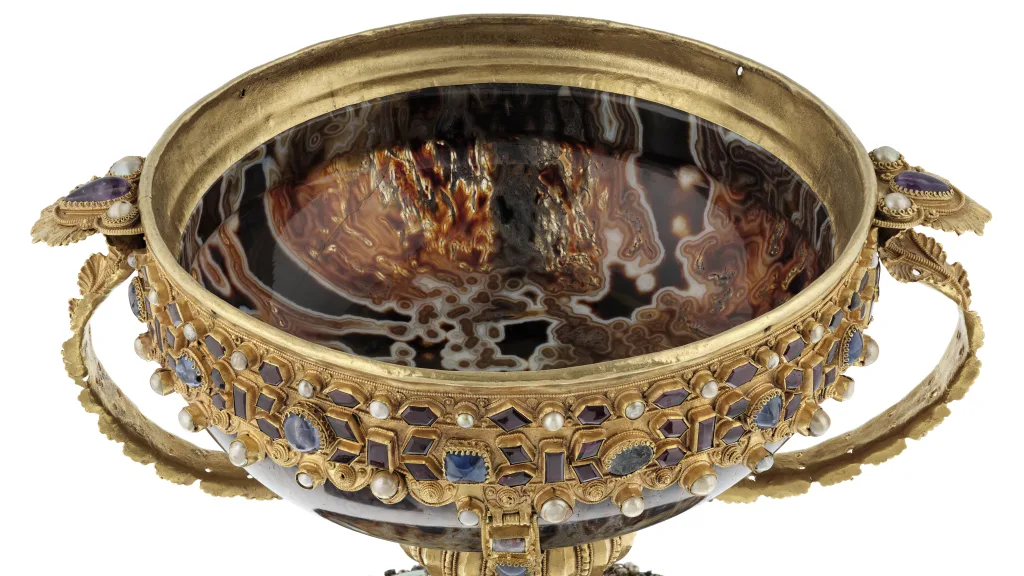
See the Reliquary of St. Elizabeth in the Gold Room at the Swedish History Museum. Photos: Ola Myrin, The Swedish History Museum/SHM (CC BY 4.0)
A golden age
In Sweden, the period between about AD 400 and 550 is referred to as both the Gold Age and the Migration Period. From about AD 800 to 1050 (the Viking Age) is sometimes called the Silver Age. The differences reflect the way in which contacts with the outside world changed, and the abundance of precious metals in the parts of the world visited by the Scandinavians. Neither copper, silver nor gold was mined in Sweden in prehistoric times. Objects arriving to Scandinavia were often melted down in local workshops and turned into new things in the craftsmen’s own styles.
The oldest gold objects include spiral ornaments which, for example, Scandinavian women were winding round their tresses in about 1500 BC. An example of this can be found in two gold bowls from Blekinge and Halland. The bowls were made of paperthin sheet gold a few centuries later, and were of no practical use whatsoever. Both of them were probably created to be sacrificed to the gods.
Right from the beginning, gold and silver had connotations of power, riches and luxury. Jewellery was inspired by spiral motifs and by snakes and dragons, wound round their owners’ arms and necks from the 16th century BC onwards. Finely decorated charms like one from Västergötland, were influenced by the art of the Black Sea region. For a number of centuries, from about the beginning of the first century AD, charms were a feminine status indicator; we find them in the graves of grown women. Finger rings had a similar function for men, as with an elegant gold ring in the collections, from Old Uppsala. Made somewhere in the Roman provinces, it was perhaps a reward for valour in the field. Another ring, set with garnets and almandines, carries a Greek inscription: “Eunesos, be of good cheer.” That ring was found in Södermanland.
The Roman Empire also inspired a kind of jewellery or gold pendants called bracteates. These were modelled on Roman originals, with the image of an Emperor, but with motifs from local folktale traditions added. A bracteate from the town of Trollhättan shows a mythological scene from Old Norse religion. Tyr, the god of heaven, is putting his hand in the mouth of the Fenris wolf as a token of the gods’ good intentions. But the treacherous wolf bites his hand off, and the forces of good and evil are now pitted against each other.
The exhibition also includes serpent’s head rings, inspired by Roman fashion. The name comes from the serpent heads in which collars, bracelets and rings terminated. These items were worn by both sexes.
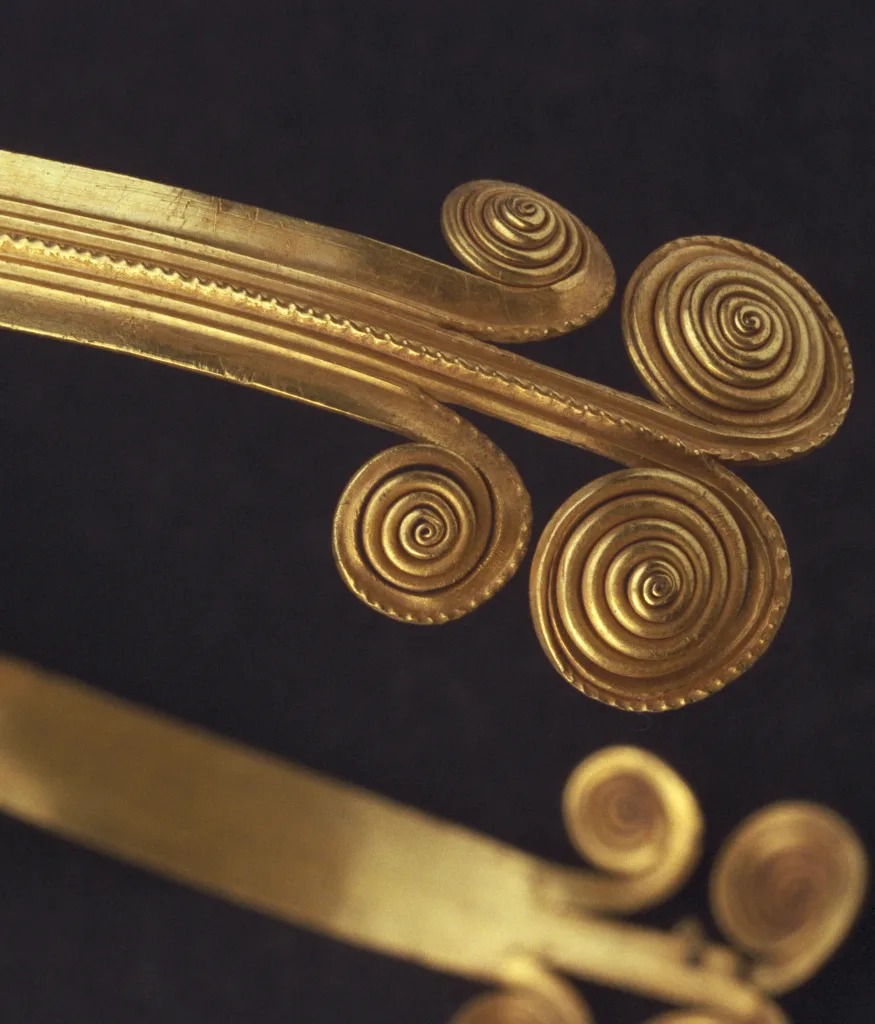
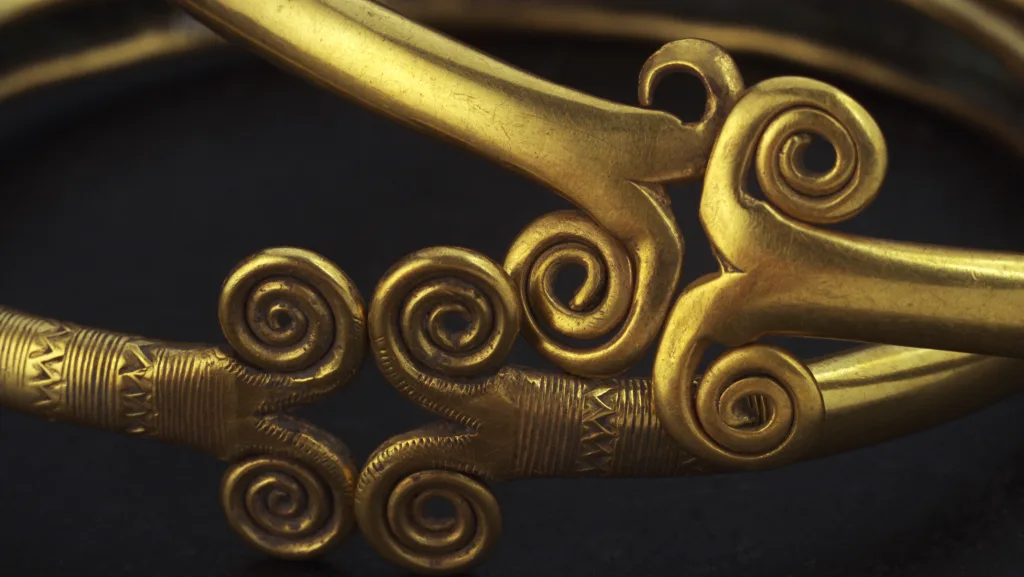
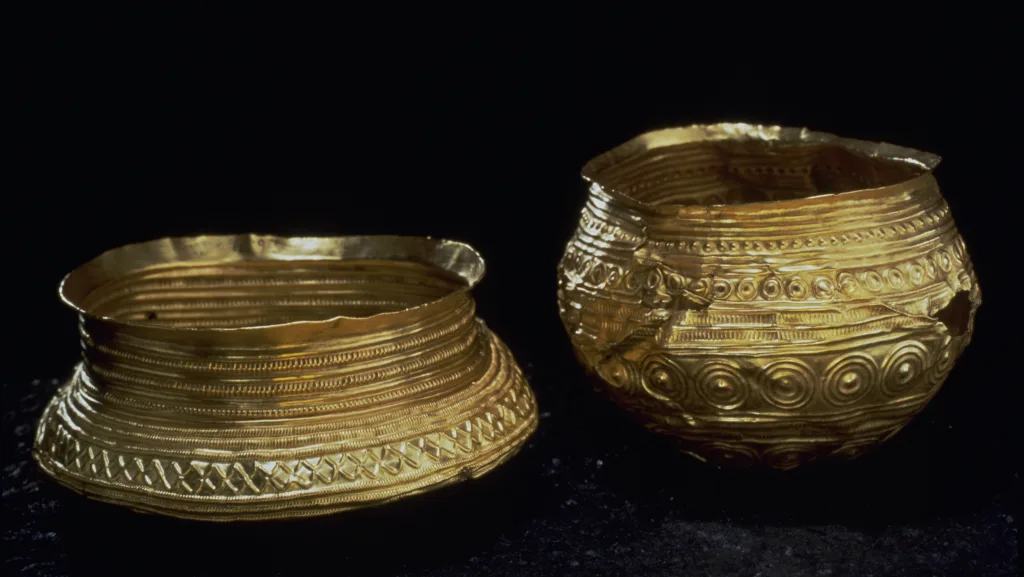
Gold diadem and arm rings from Skåne, and gold bowls from Blekinge and Halland. Photos: Ulf Bruxe, The Swedish History Museum/SHM (CC BY 4.0)
Unique gold collars
The collections contain unique masterpieces – three gold collars, two from Västergötland and one from Öland. Made in the 5th century, they were unearthed separately in the 19th century, unaccompanied by any other finds. The collars are sometimes regarded as Sweden’s oldest regalia, but we do not know who wore them or what function they had. One theory is that they come from wooden images of gods, another that they were worn by women or men who were political or religious leaders. We can see that the collars have been used, because they show signs of wear and some of the decoration has fallen off. The collars consist of tubes bent into a ring, and they can be opened by means of an ingenious locking device. Their décor teems with soldered miniature human and animal figures, the significance of which is lost to us. Here we see stylised faces, women with plaits and loincloths, nude shield bearers, serpents and dragons, wild boar, birds, lizards, horses and fabulous beasts, all of them so small, they are barely visible to the naked eye.
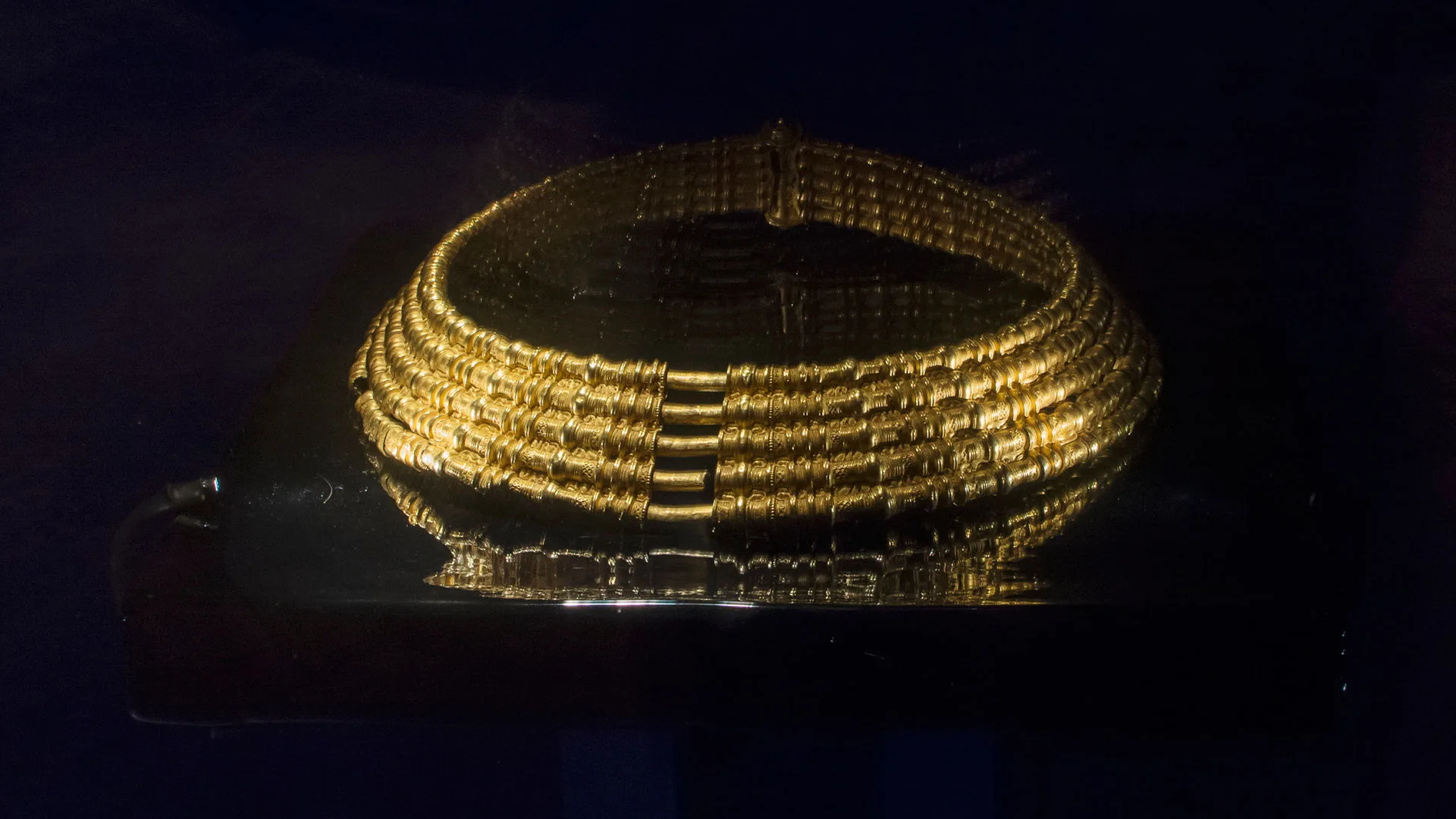
Mythology
The world of myths can be seen in everything from the decoration of gold to large pieces of ornamental jewellery. Small statuettes and represent gods, goddesses and other mythological characters. In the Gold Room, you can see statuettes and pendants who may represent the gods Odin and Frey and the goddess Freya. There are also pendants on display that show images of Valkyries, who were Odin’s female helpers in battle. There is also one object on view that represents the new religion, Christianity. It is the oldest crucifix in Sweden, made at the Viking trading post Birka.
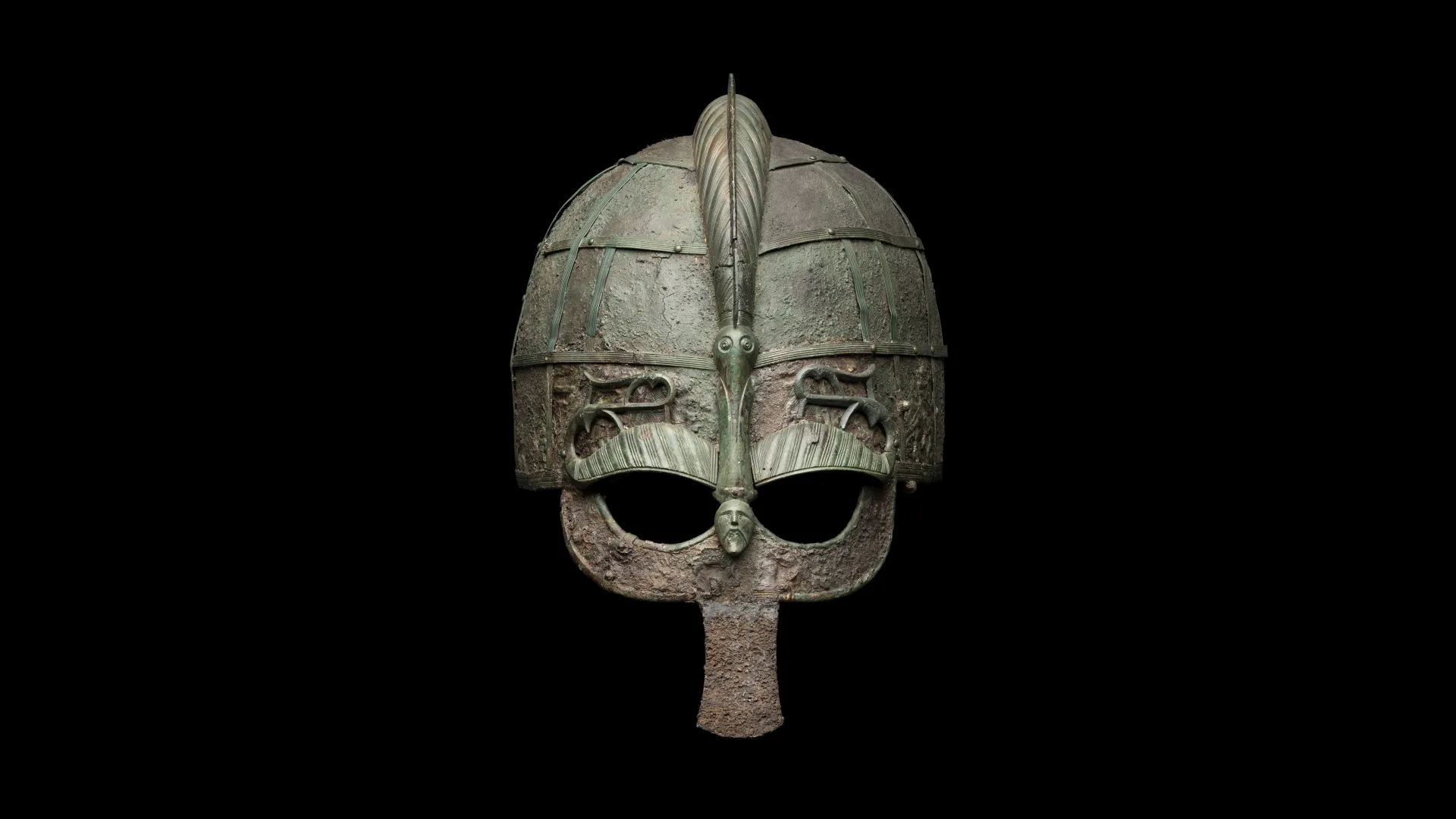
Power
Some objects clearly communicate power, for example a helmet from Vendel, Uppland, and swords from the Viking Age. The helmet has been decorated with thin repoussé bronze sheets, depicting scenes from Norse mythology. They were made locally; bronze plaques used to make exactly the kind of bronze sheets that decorate the helmet have been found in Öland, Sweden. The helmet’s owner was a magnate belonging to a powerful dynasty in northern Uppland. Another artefact expressing power is an ornamental sword from the 9th or 10th century. The sword was found on Gotland and has advanced silver inlay, or embedded decoration.
Decorative arts reached its peak of acheivement during the Gold Age in Sweden. Examples you can in the Gold Room are heavy silver necklaces and magnificent gilded brooches for women’s dress. Elegantly pressed ornamentation, twisted arm rings and large sets of beads, signalled women's status and influence.
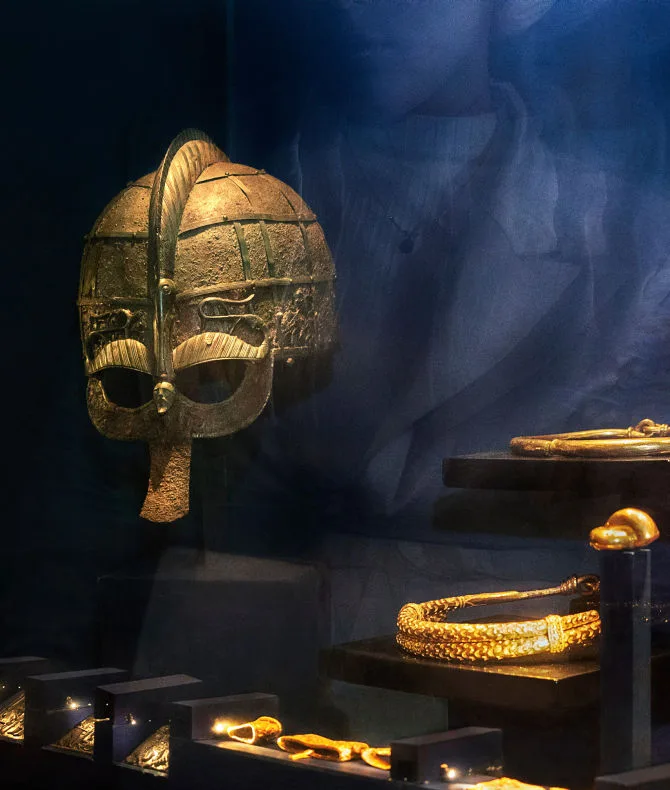
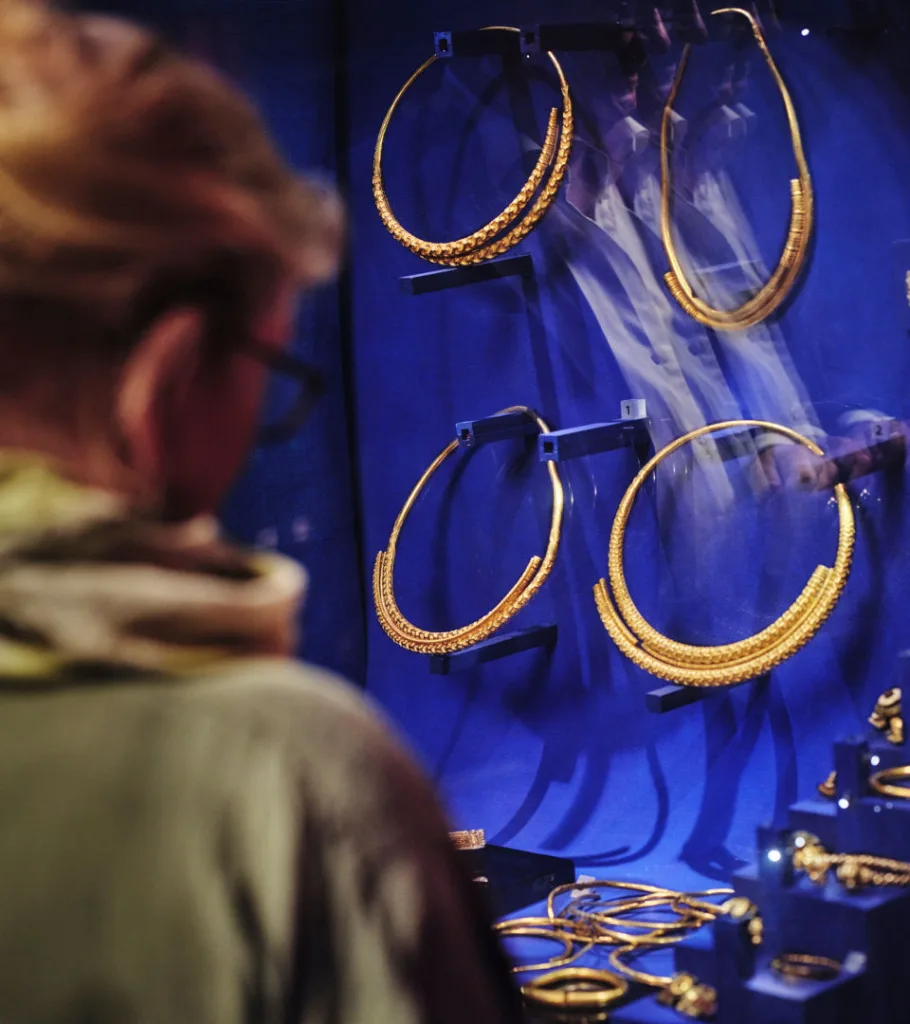
Photos: Ola Myrin, The Swedish History Museum/SHM.
Coin hoards
In Scandinavia, many hoards have been discovered. Coins in these date back to the first few centuries AD and originate from the Roman Empire. Later, between about 800 and 1050, coins came instead from the Arab world, and also from Germany and England. These were of no monetary significance in Scandinavia. Instead, it was the weight of metal that determined their value. Even so, people made sporadic attempts at minting their own coinage, and you can see an early example in the Gold Room, in the form of a coin from Birka which has been turned into a pendant. Swedish coin minting did not get seriously underway till the 12th century.
Gold and silver treasures
People went on concealing hoards of silver and gold in the ground, especially in troubled times. One of the biggest medieval treasures in Europe is the Dune hoard from Gotland, which had been collected for several centuries before being hidden away. It included fine belt buckles, beakers from the east and locally made pendants. Other caches also included jewellery, pearls and drinking bowls showing Russian or Byzantine influence. Many of Gotland’s hoards were buried in about 1361, when the island was invaded by the Danes. Learn more in the exhibition Medieval Massacre.
Sami hoards were deposited at special votive sites in the northern parts of Scandinavia. They consisted of fine silver, tin and copper-alloy objects, along with animal bones and reindeer antlers. The Gold Room contains the biggest Sami treasure hoard in Sweden, from Gråträsk, on Lake Tjautjer in Norrbotten.
War booty
Some of the most magnificent objects on view in the Gold Room are war booty, property of an enemy that is seized during wartime. Communion chalices, altar crucifixes and bishops’ croziers came to Sweden from various parts of Germany during the Thirty Years War.
The famous Reliquary of Saint Elizabeth is believed to have held the saint’s cranium. This is an exquisite specimen of European goldsmithing. It is made up of several parts of varying origin: an agate bowl from late classical antiquity (4th – 7th century), handles and a rim mount adorned with pearls and gemstones from the 11th century, and parts of two regal crowns with a base, from the 13th century. The reliquary fell into the hands of the Swedish army in 1632, when they captured the fortress of Marienberg in Würzburg.
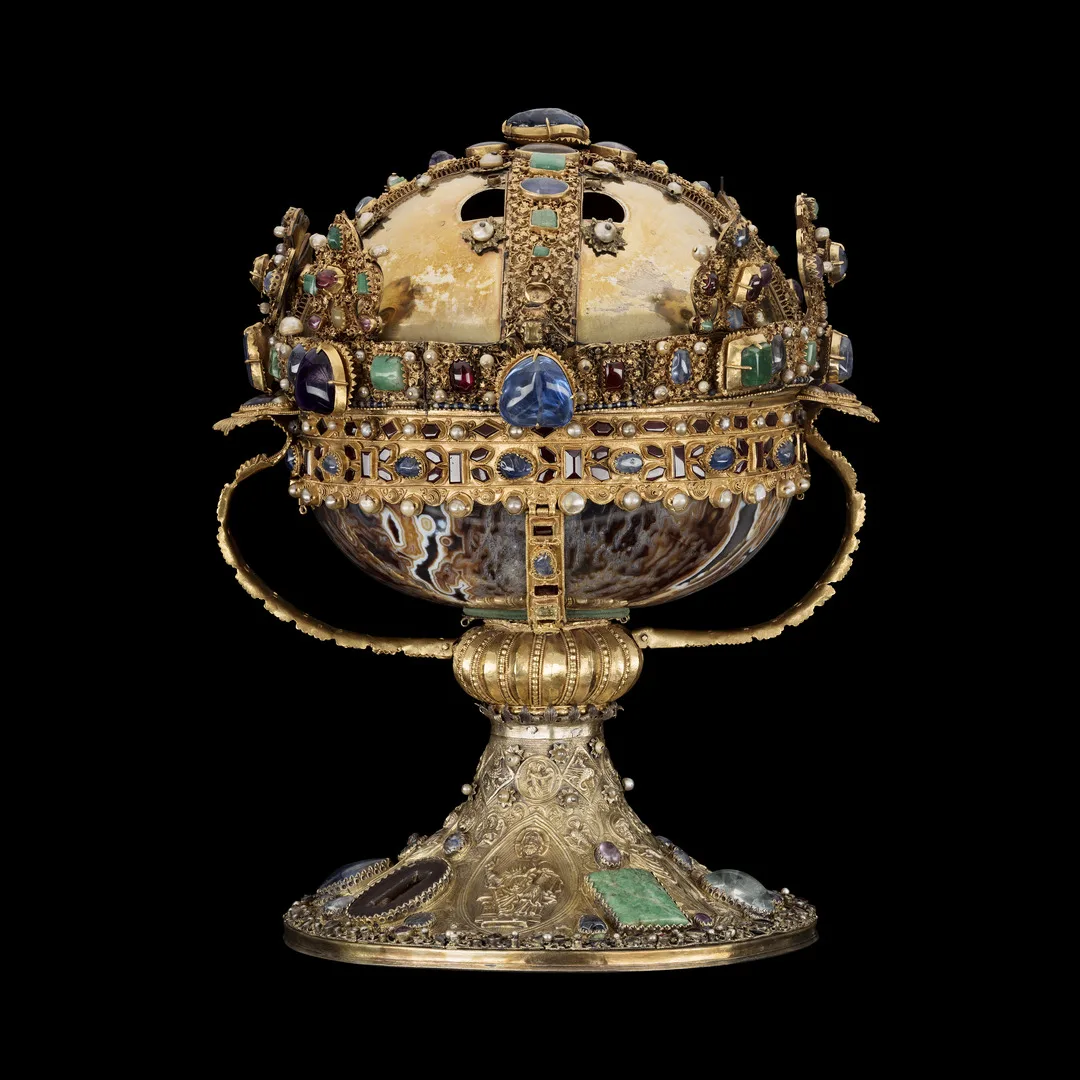
Reliquary of Saint Elizabeth
On view at Historiska museet in the exhibition GuldrummetFind this object in display Monter 28, Elisabethrelikvariet
What to know before your visit
- Admission: Free admission for children and youth aged 0–18. See admission fees for adults.
- Cloakroom: The cloakroom is located on the entrance floor. Here you will find lockers with locks. Small bags are allowed inside the exhibition areas. If you want to store larger suitcases, you can borrow a key at the information desk for the larger lockers in the cloakroom.
- Strollers: You are allowed to bring strollers inside the museum, except in the Gold Room.
Accessibility
We strive to continuously improve our accessibility to make it easy to visit us, both on-site and digitally. There are elevators to all floors, accessible toilets on all three levels, and disabled parking close to the entrance. Guide dogs are welcome.
Plan your visit
